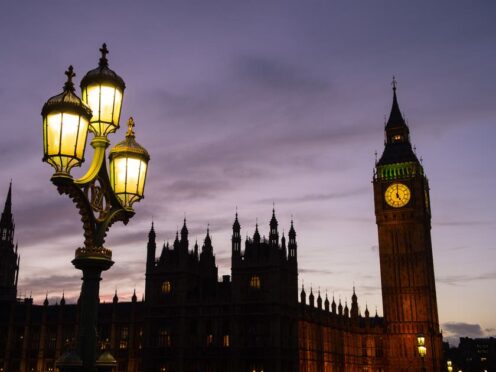House of Commons Speaker Sir Lindsay Hoyle has apologised for his handling of the Gaza ceasefire debate, which descended into acrimony after he upended parliamentary convention to approve a Labour amendment on the SNP opposition day motion.
Sir Lindsay, 66, is under pressure amid accusations he helped the Labour leader avoid another damaging revolt over the Middle East issue, with more than 60 MPs so far signing a no-confidence motion in the Speaker.
But would pressure be enough to depose the Speaker? And what is a Speaker?
– History of the Speaker
Though the Speakership under its present title dates back to the appointment of Sir Thomas Hungerford in 1377, the UK Parliament identifies the first presiding officer as Peter de Montfort during the “Mad Parliament” in 1258.
Until the 17th century, the Speaker acted as a perilous intermediary between Parliament and the King.
Upon receiving unwelcome news from their representative, Kings would often shoot the messenger, leading to the beheading of seven Speakers between 1394 and 1535.

In 1642 Speaker William Lenthall defied King Charles I’s order to reveal where five members of Parliament wanted for treason were, saying: “I have neither eyes to see nor tongue to speak in this place but as this House is pleased to direct me.”
Speakers frequently held positions within government after the restoration of the monarchy in 1660, but Speaker Arthur Onslow set in motion the distancing of the Speaker from Government in the 1700s.
– What is the Speaker’s role?
The role of the Speaker is now strictly politically impartial, with incoming appointees obliged to resign from their party.
The Speaker is a Member of Parliament who typically stands unopposed in general elections during their time in office, at least by major parties.
As well as presiding over and maintaining order at debates, the modern Speaker chooses who speaks in the Commons, decides on which amendments or urgent questions can be heard, and permits emergency debates.
Under Speaker Denison’s rule, the Speaker is required to give a casting vote in the event of a tie, though they are advised to always vote for further discussion.
The Speaker is supported by the Clerk of the House of Commons, a similarly politically impartial position currently occupied by Tom Goldsmith, and a deputy Speaker, which is at present Dame Eleanor Laing, to perform duties in their absence.
– How is the Speaker elected?
A secret ballot of MPs elects a new Speaker at the beginning of Parliament after a general election, or in the event of a predecessor stepping down, dying or retiring.
Should a Speaker wish to remain in post after a general election, they can be reappointed via a majority vote in the Commons.

Though there is no formal framework for the compulsory removal of a Speaker from their role, the resignation of Michael Martin in 2009 set a precedent for the sway of peer pressure and underlined the importance of confidence in the Speaker.
Mr Martin, who was elected Speaker in 2000, stepped down after criticism of his part in the MPs’ expenses scandal.
– Who is Sir Lindsay Hoyle?
Son of Lord Hoyle, the former Labour MP, Sir Lindsay grew up with an unwavering ambition to emulate his father’s political career.
Sir Lindsay became the youngest ever councillor to serve Chorley, Lancashire, at the age of 22, going on to become the Mayor of Chorley between 1997 and 1998.
He then stood for the Chorley parliamentary seat in 1997, becoming the first Labour MP to represent the constituency for 18 years, before being elected Speaker on February 4 2019.
A well-known animal lover, Sir Lindsay and his wife Catherine Swindley live with a variety of pets assigned political namesakes including a parrot called Boris, a Patterdale terrier named Betty, a tortoise named Maggie and a kitten called Attlee.
– Who is John Bercow and where is he now?
Cries of “bring back Bercow” could be heard in the chamber after Sir Lindsay’s intervention in the Gaza ceasefire vote, referring to the Speaker’s predecessor John Bercow.

Such a retort was perhaps tongue in cheek, given the Conservative Party’s well-documented annoyance at Mr Bercow’s perceived slide to the left over the course of his term.
A former Conservative MP for Buckingham, Mr Bercow stepped down in 2019 after a 10-year stint at the helm which made him the longest serving Speaker since Edward Fitzroy, who left office in 1943.
Mr Bercow was then accused of bullying by his former colleagues, became the first Speaker in 230 years to be snubbed of a position in the Lords, and announced he had changed allegiances to Labour in 2021.
He has most recently starred as a contestant in the American version of TV show The Traitors.
